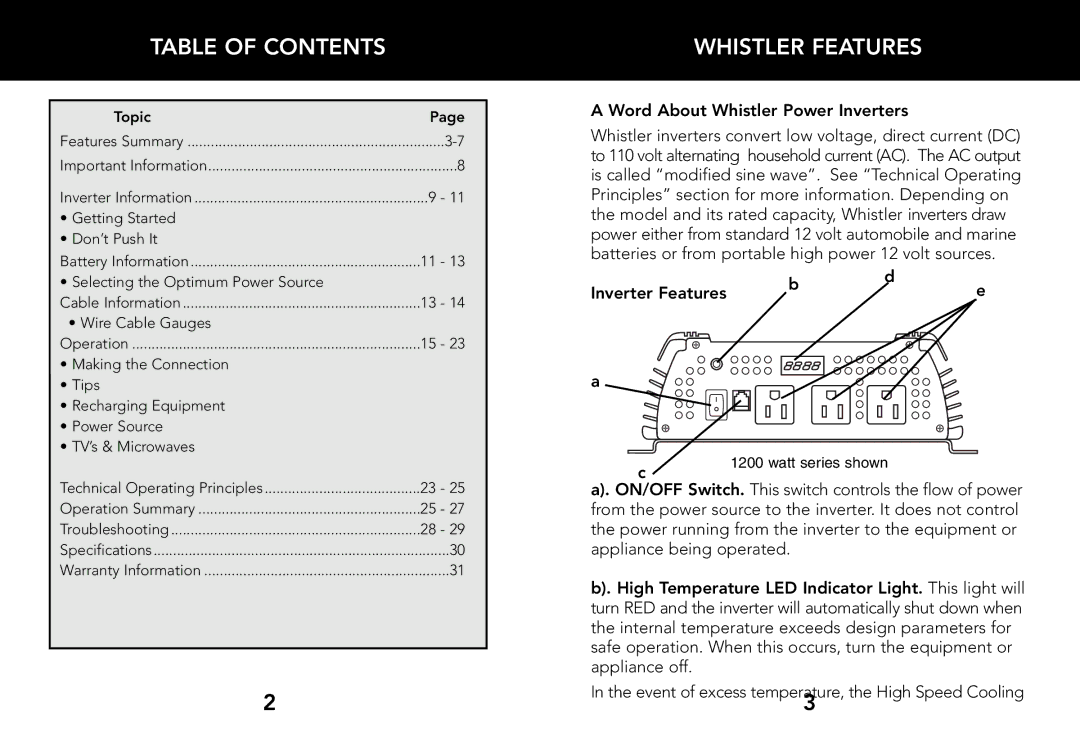
TABLE OF CONTENTS
Topic | Page | |
Features Summary | ||
Important Information | 8 | |
Inverter Information | 9 | - 11 |
• Getting Started |
|
|
• Don’t Push It |
|
|
Battery Information | 11 | - 13 |
• Selecting the Optimum Power Source |
|
|
Cable Information | 13 | - 14 |
• Wire Cable Gauges |
|
|
Operation | 15 | - 23 |
• Making the Connection |
|
|
• Tips |
|
|
• Recharging Equipment |
|
|
• Power Source |
|
|
• TV’s & Microwaves |
|
|
Technical Operating Principles | 23 | - 25 |
Operation Summary | 25 | - 27 |
Troubleshooting | 28 | - 29 |
Specifications | 30 | |
Warranty Information | 31 | |
|
|
|
2
WHISTLER FEATURES
A Word About Whistler Power Inverters
Whistler inverters convert low voltage, direct current (DC) to 110 volt alternating household current (AC). The AC output is called “modified sine wave”. See “Technical Operating Principles” section for more information. Depending on the model and its rated capacity, Whistler inverters draw power either from standard 12 volt automobile and marine batteries or from portable high power 12 volt sources.
| b | d | |
Inverter Features | e | ||
|
a
c
a). ON/OFF Switch. This switch controls the flow of power from the power source to the inverter. It does not control the power running from the inverter to the equipment or appliance being operated.
b). High Temperature LED Indicator Light. This light will turn RED and the inverter will automatically shut down when the internal temperature exceeds design parameters for safe operation. When this occurs, turn the equipment or appliance off.
In the event of excess temperature, the High Speed Cooling
3
